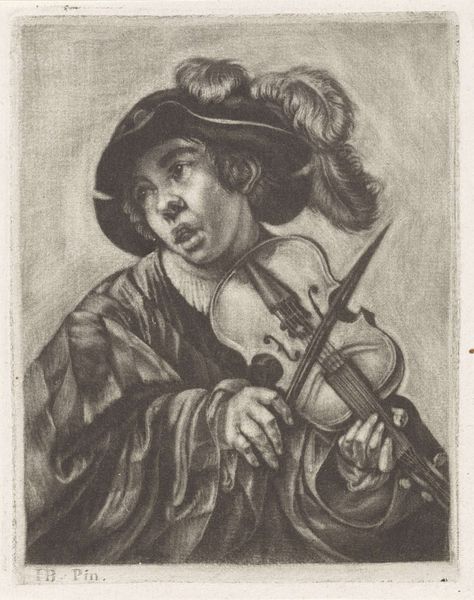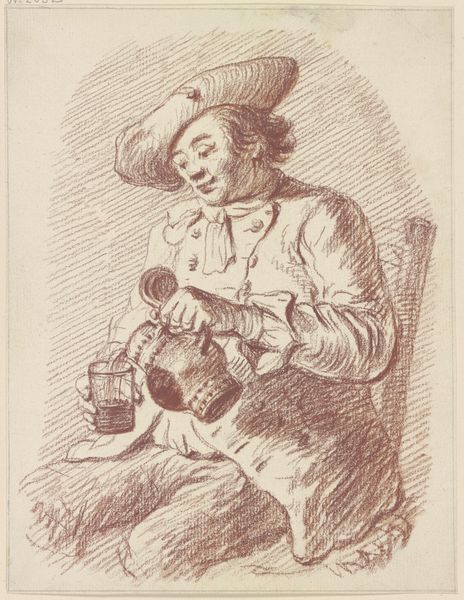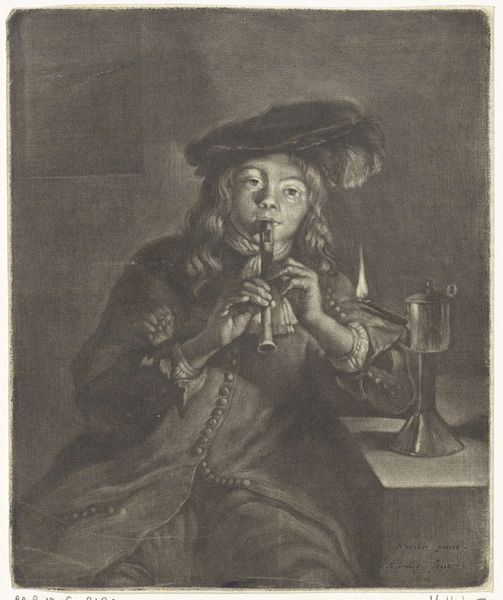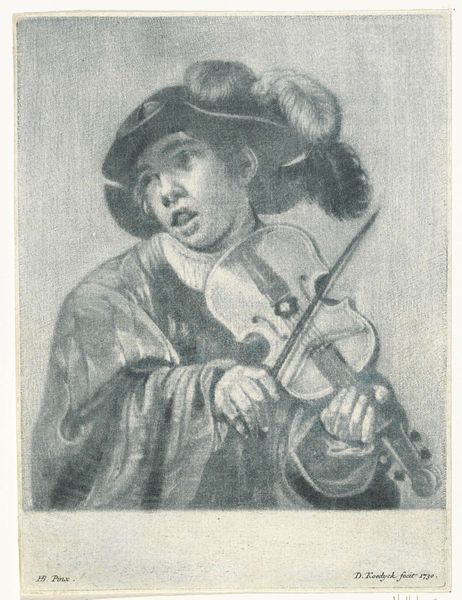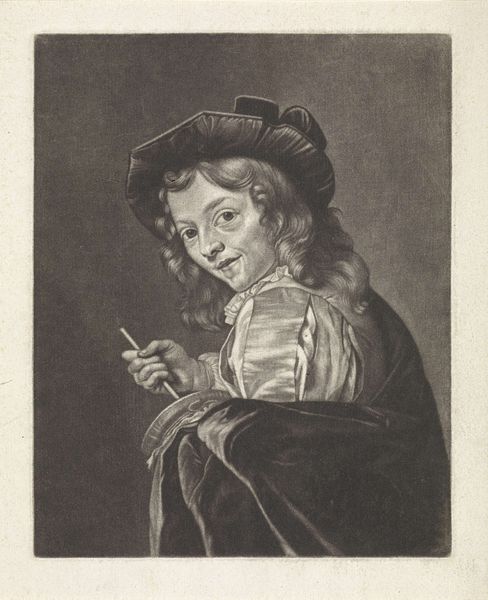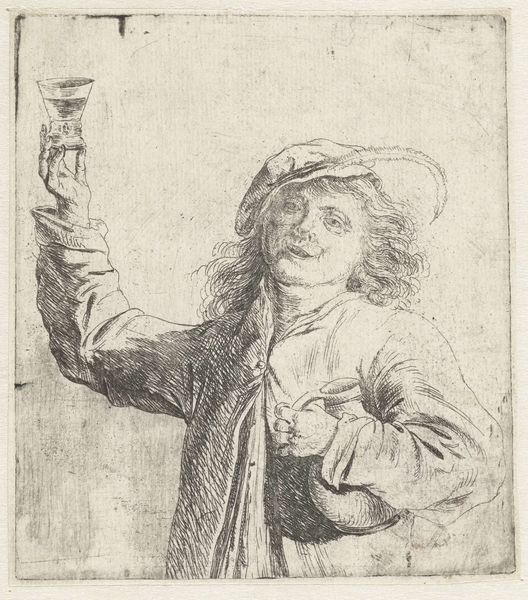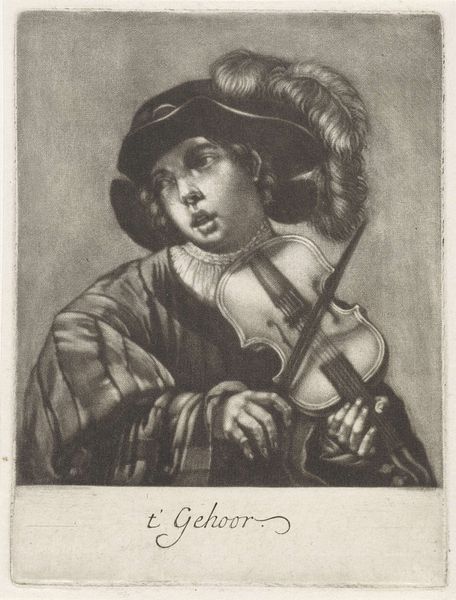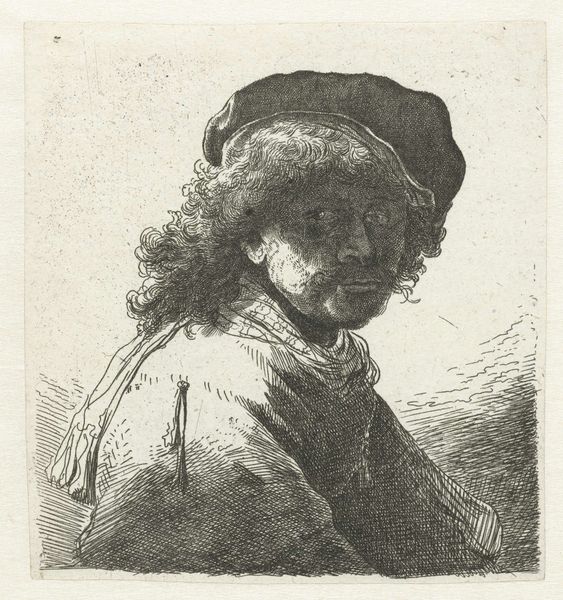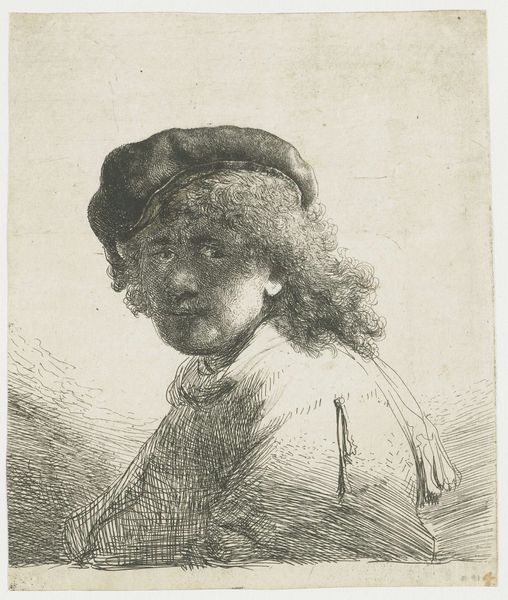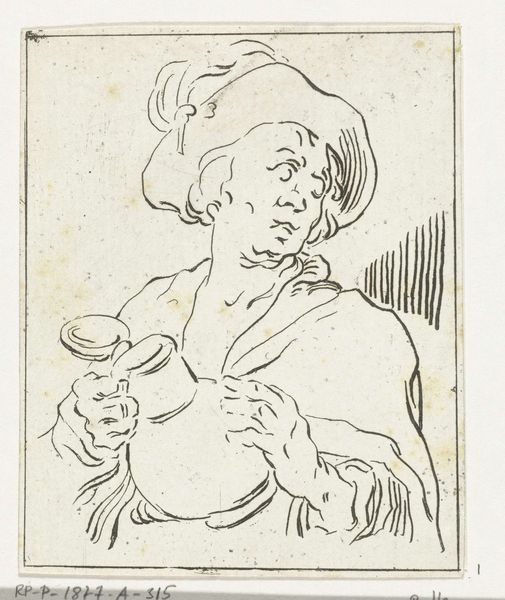
print, engraving
#
portrait
#
dutch-golden-age
# print
#
genre-painting
#
engraving
Dimensions: height 129 mm, width 101 mm
Copyright: Rijks Museum: Open Domain
Editor: Here we have Jan Verkolje's "Vioolspeler," made between 1660 and 1693, an engraving. There's a certain innocence to this young musician's expression, but something about the details in the feather and fabrics suggests more formal societal expectations too. How would you interpret this work? Curator: It's interesting that you pick up on that tension between innocence and formality. From a historical perspective, consider the Dutch Golden Age context. Genre paintings like this were becoming increasingly popular with the burgeoning middle class. What social message do you think images like this were intended to convey, and for whom? Editor: Hmm, maybe a sense of aspirational culture? That even a commoner could be cultured and enjoy music? Or perhaps it's just a display of the engraver's skill in rendering detail. Curator: Precisely! Both aspirations are very astute and closely linked to artistic representation. The rising middle class in the Dutch Golden Age wanted to see themselves reflected, and even ennobled, in art. Artists like Verkolje capitalized on that. Consider too, the rise of printmaking—suddenly art became much more accessible to a wider audience. Does knowing this change your view of the work at all? Editor: Yes, it does. It goes from a simple portrait to more of a cultural artifact reflecting complex social dynamics. Thanks for sharing that. I'm starting to understand how art is never really created in a vacuum. Curator: Exactly! And these societal considerations change how we engage with and contextualize these images within the history of art. This new perspective deepens the experience.
Comments
No comments
Be the first to comment and join the conversation on the ultimate creative platform.

